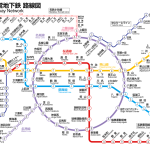Relocating to Nagoya, Japan, presents unique challenges, especially when navigating the local banking system. This guide is tailored to assist new residents in setting up a bank account, highlighting the process and key considerations unique to Japan.
Why Open a Japanese Bank Account?
- Essential for Daily Life: Necessary for paying bills, receiving a salary, and making everyday purchases.
- Rent Payments: Most landlords in Japan, including Nagoya, require a local bank account for rent deductions.
- Facilitates International Transactions: Useful for sending and receiving money internationally.
Eligibility and Documentation
- Residence Card (Zairyu Card): Essential for foreign residents; proves long-term stay in Japan.
- Long-term Visa: Required for stays over six months.
- Additional Documents: Passport, proof of Japanese address and phone number, and a personal hanko seal. Ensure your hanko isn’t smudged, as it denotes authorization.
Types of Bank Accounts
- General Deposit Account (Futsu yokin): Common for daily banking needs.
- General Savings (Tsujo chokin): Offers slightly higher interest rates.
- Time Deposit (Teiki yokin): For longer-term savings with higher interest.
- Foreign Currency Accounts (Gaika yokin): For handling transactions in foreign currencies.
Choosing a Bank in Nagoya
- Foreigner-Friendly Banks: Consider banks like PRESTIA (SMBC Trust Bank), Sony Bank, Rakuten Bank, SEVEN BANK, Shinsei Bank, and Japan Post Bank.
- Language Support: Banks in Nagoya may have English-speaking staff or offer English online banking services.
- Accessibility: Consider the proximity of bank branches and ATMs to your residence or workplace in Nagoya.
- Shinsei Bank: Known for its expat-friendly approach, Shinsei Bank offers English online and telephone banking services, which is a significant advantage for those who are not fluent in Japanese. They also provide a variety of account types and have a reputation for easy setup and use.
- PRESTIA (SMBC Trust Bank Ltd.): This bank is also well-regarded among expatriates for its English support. They offer a range of banking products suitable for foreigners, including competitive international transfer rates. The absence of a hanko requirement for account opening is an added convenience.
- Japan Post Bank (Yucho): With an extensive network of branches and ATMs nationwide, including Nagoya, Japan Post Bank is accessible and convenient. They also offer services without the requirement of a 6-month residence in Japan, making them a good choice for new arrivals.
- Sony Bank: Sony Bank allows account opening via an app in English, which is particularly appealing for those who prefer digital banking. They also offer a range of services that cater to the needs of expatriates.
- Rakuten Bank: Known for its online services, Rakuten Bank offers an English online application process. This bank could be a good choice if you are comfortable with online banking and do not require physical branch services frequently.
Step-by-Step Guide to Opening an Account
- Select a Bank: Research and choose based on services, language support, and convenience.
- Prepare Required Documents: Gather all necessary documents, ensuring they are current and accurate.
- Application Process: Apply online or visit a branch. In Nagoya, some banks may facilitate in-person visits with English-speaking staff.
- Complete the Application Form: Fill it out accurately. If visiting a branch, consider bringing a Japanese-speaking friend if you’re not fluent.
- Initial Deposit: Some banks might require an initial deposit.
- Receive Bank Card and Passbook: Typically issued immediately or shortly after account approval.
- Online Banking Setup: Recommended for easy account management.
Money Transfers and International Banking
- WISE (TransferWise): Efficient for international money transfers, offering mid-market exchange rates and transparent fees. For an introductory fee-free transfer of up to 75,000 JPY, click here: www.wise.com
- Bank Transfers: Be aware of potential domestic and international transfer fees.
Final Tips for Banking in Nagoya
- Cash-Based Society: Japan, including Nagoya, still relies heavily on cash, so carrying cash is often necessary.
- Bank Hours: Japanese banks generally have shorter operating hours than Western countries.
- ATM Accessibility: Conveniently located in many stores and stations, but be mindful of fees for out-of-network usage.
Bonus: ATM and Banking Vocabulary
| English | Japanese |
|---|---|
| Deposit | 預金(yokin) or 預ける(azukeru) |
| International transfer | 海外送金(kaigai soukin) |
| Passbook | 通帳(tsuuchou) |
| Transfer | 振込(furikomi) |
| Withdrawal | 引き出し(hikidashi) |
By following this guide, new residents in Nagoya can navigate the Japanese banking system with greater ease and confidence. Remember, each bank has specific requirements and offerings, so it’s advisable to check directly with the bank of your choice for the most accurate information.
ASTELUS, CC BY-SA 4.0, via Wikimedia Commons




